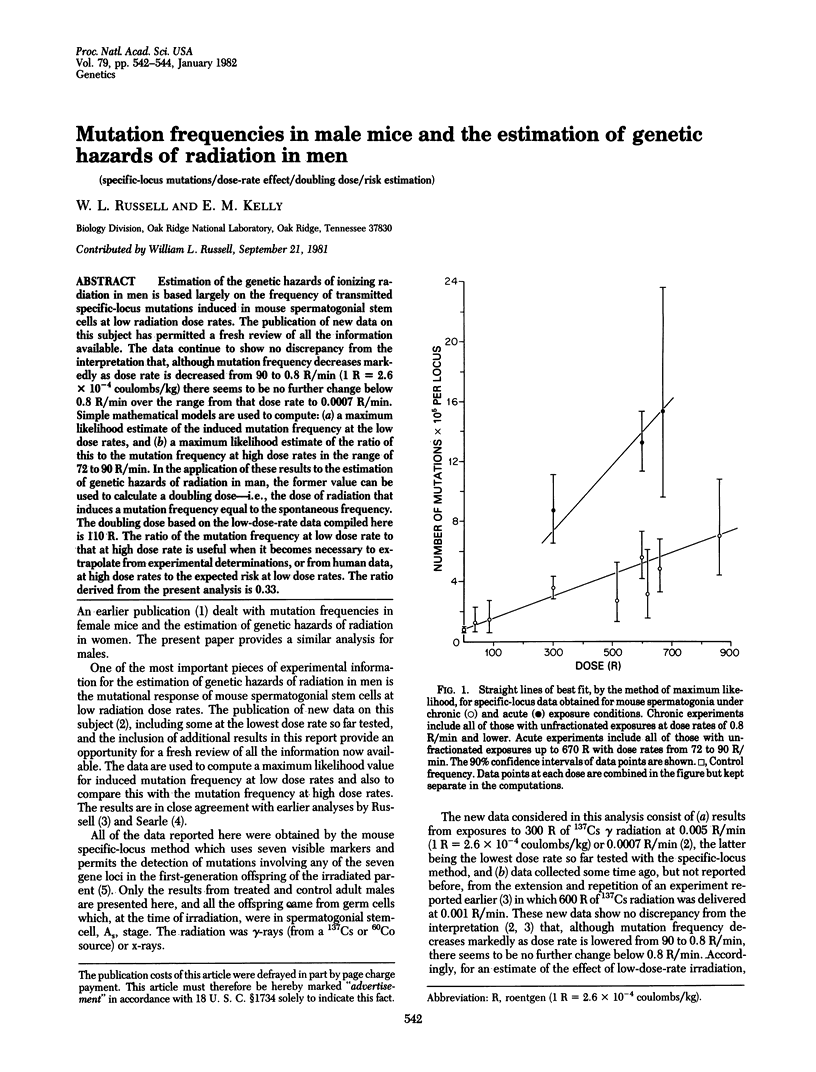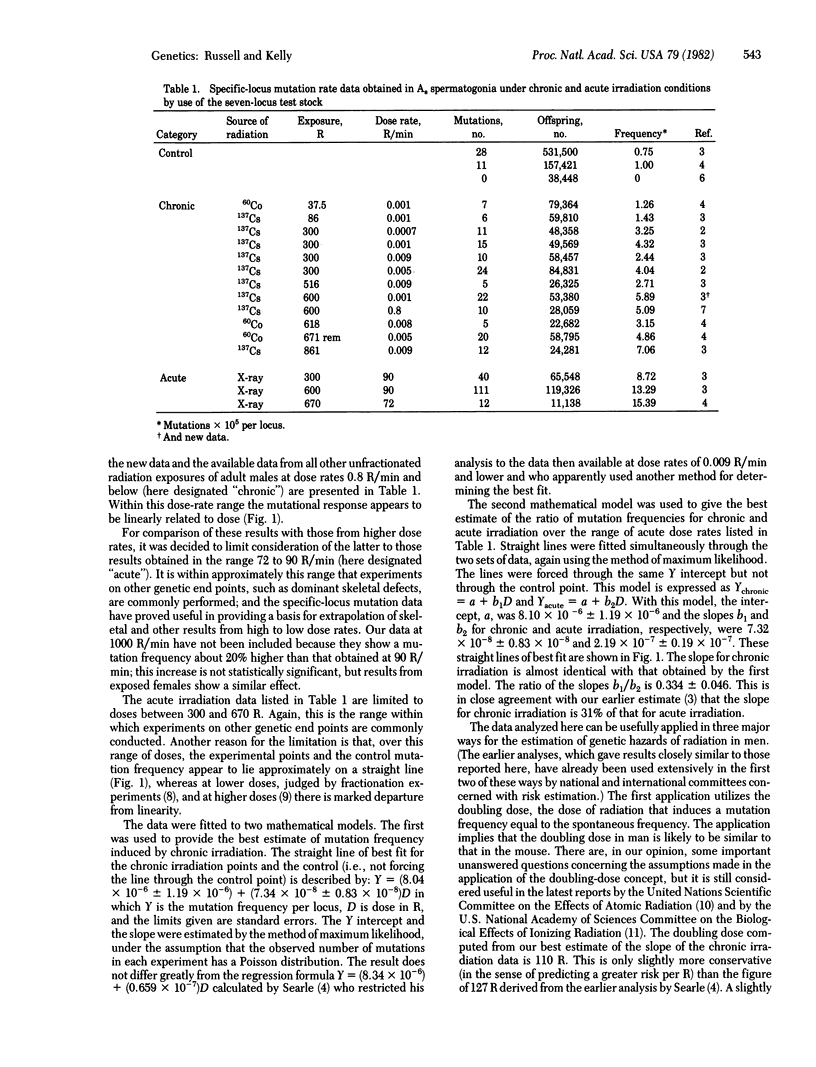Abstract
Estimation of the genetic hazards of ionizing radiation in men is based largely on the frequency of transmitted specific-locus mutations induced in mouse spermatogonial stem cells at low radiation dose rates. The publication of new data on this subject has permitted a fresh review of all the information available. The data continue to show no discrepancy from the interpretation that, although mutation frequency decreases markedly as dose rate is decreased from 90 to 0.8 R/min (1 R = 2.6 x 10(-4) coulombs/kg) there seems to be no further change below 0.8 R/min over the range from that dose rate of 0.0007 R/min. Simple mathematical models are used to compute: (a) a maximum likelihood estimate of the induced mutation frequency at the low dose rates, and (b) a maximum likelihood estimate of the ratio of this to the mutation frequency at high dose rates in the range of 72 to 90 R/min. In the application of these results to the estimation of genetic hazards of radiation in man, the former value can be used to calculate a doubling dose--i.e, the dose of radiation that induces a mutation frequency equal to the spontaneous frequency. The doubling dose based on the low-dose-rate data compiled here is 110 R. The ratio of the mutation frequency at low dose rate to that at high dose rate is useful when it becomes necessary to extrapolate from experimental determinations, or from human data, at high dose rates to the expected risk at low dose rates. The ratio derived from the present analysis is 0.33.
Full text
PDF


Selected References
These references are in PubMed. This may not be the complete list of references from this article.
- Lyon M. F., Phillips R. J., Bailey H. J. Mutagenic effects of repeated small radiation doses to mouse spermatogonia. I. Specific-locus mutation rates. Mutat Res. 1972 Jun;15(2):185–190. doi: 10.1016/0027-5107(72)90031-0. [DOI] [PubMed] [Google Scholar]
- Russell W. L., Kelly E. M. Specific-locus mutation frequencies in mouse stem-cell spermatogonia at very low radiation dose rates. Proc Natl Acad Sci U S A. 1982 Jan;79(2):539–541. doi: 10.1073/pnas.79.2.539. [DOI] [PMC free article] [PubMed] [Google Scholar]
- Russell W. L. Mutation frequencies in female mice and the estimation of genetic hazards of radiation in women. Proc Natl Acad Sci U S A. 1977 Aug;74(8):3523–3527. doi: 10.1073/pnas.74.8.3523. [DOI] [PMC free article] [PubMed] [Google Scholar]
- Schull W. J., Otake M., Neel J. V. Genetic effects of the atomic bombs: a reappraisal. Science. 1981 Sep 11;213(4513):1220–1227. doi: 10.1126/science.7268429. [DOI] [PubMed] [Google Scholar]
- Selby P. B., Selby P. R. Gamma-ray-induced dominant mutations that cause skeletal abnormalities in mice. I. Plan, summary of results and discussion. Mutat Res. 1977 Jun;43(3):357–375. doi: 10.1016/0027-5107(77)90058-6. [DOI] [PubMed] [Google Scholar]
- Selby P. B. X-ray-induced specific-locus mutation rate in newborn male mice. Mutat Res. 1973 Apr;18(1):63–75. doi: 10.1016/0027-5107(73)90021-3. [DOI] [PubMed] [Google Scholar]


